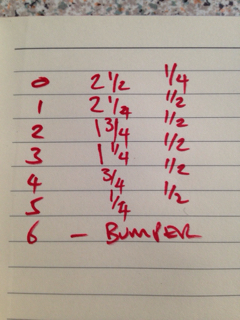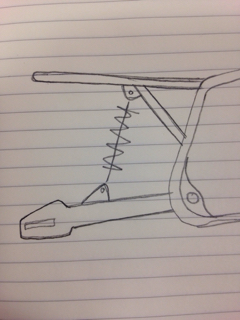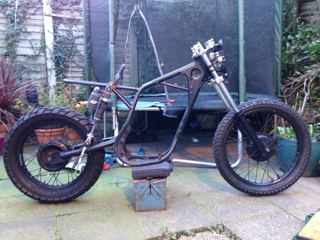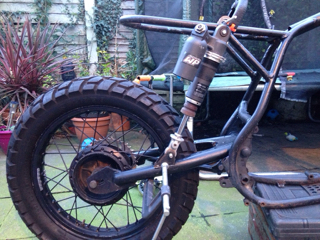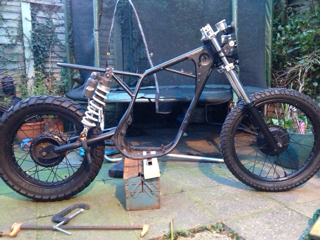here is the last great twin shock motorcycle
it was the best twin shock lashup ever done then or since .fact
one reason was the ohlins built husky/ohlins designed itc shocks (ITC internal travel control )they were the only production shocks ever used with a sophisticated position/travel active/sensitive damping and were on par with mono shocks in action however monoshocks did and still do have many advantages
husky was the last holdout on twinshocks and at the time they were focusing on off road racing something i witnessed first hand racing with champions like ama national enduro champion dave bertram who always used the husky automatic
the 1984 husky 500 auto a masterpiece

it was the best twin shock lashup ever done then or since .fact
one reason was the ohlins built husky/ohlins designed itc shocks (ITC internal travel control )they were the only production shocks ever used with a sophisticated position/travel active/sensitive damping and were on par with mono shocks in action however monoshocks did and still do have many advantages
husky was the last holdout on twinshocks and at the time they were focusing on off road racing something i witnessed first hand racing with champions like ama national enduro champion dave bertram who always used the husky automatic
the 1984 husky 500 auto a masterpiece




